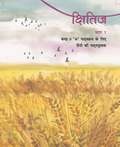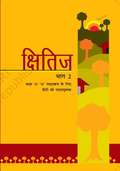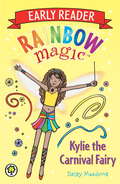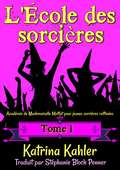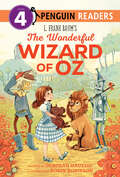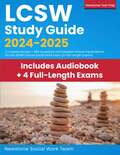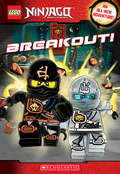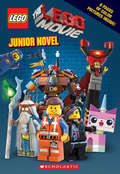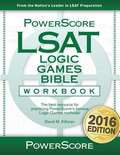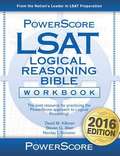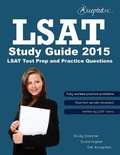- Table View
- List View
Krushi Bhugol First Semester FYBA, B.COM, B.SC New NEP Syllabus - SPPU: कृषी भूगोल प्रथम सत्र एफ.वाय.बी.ए., बी.कॉम, बी.एस्सी नवीन एन.इ.पी. अभ्यासक्रम - सावित्रीबाई फुले पुणे यूनिवर्सिटी
by Prof. Ashok Maruti Thorat Prof. Dr. Sanjay Dagu Pagar Prof. Nikhil Uttam Agleसावित्रीबाई फुले पुणे विद्यापीठाच्या (SPPU) नवीन राष्ट्रीय शैक्षणिक धोरण (NEP) 2020 अंतर्गत प्रथम वर्ष बी.ए. (FYBA) अभ्यासक्रमात कृषी भूगोल हा अभ्यासक्रम समाविष्ट करण्यात आला आहे. कृषी भूगोल हा आर्थिक भूगोलाची एक महत्त्वाची उपशाखा असून, शेतीचे प्रादेशिक वितरण, शेती प्रकार, उत्पादन पद्धती, तसेच तांत्रिक, सामाजिक व पर्यावरणीय घटकांचा सखोल अभ्यास करतो. या विषयात शेती विकासाचे टप्पे, शेतीत होणारे बदल, तसेच शेती पद्धतींचे स्वरूप स्पष्ट केले जाते. शेतीच्या विविध प्रकारांचे विश्लेषण करताना त्यावर प्रभाव टाकणाऱ्या भौतिक घटकांबरोबरच आर्थिक, सामाजिक, सांस्कृतिक आणि तांत्रिक घटकांचा सखोल अभ्यास केला जातो. शेतीविकासासाठी हरित, निळी आणि धवल क्रांतींची माहिती दिली जाते, तसेच जलसिंचनाच्या पद्धती, तंत्रज्ञानाचा वापर, आणि शाश्वत शेतीच्या दिशेने होणारे बदल समजावले जातात. कृषी भूगोलाचा अभ्यास शेतकऱ्यांना उत्पादन वाढवण्यासाठी, संशोधकांना नवनवीन पद्धती विकसित करण्यासाठी, तसेच उद्योगांना कृषीपूरक व्यवसायांचे नियोजन करण्यासाठी उपयोगी पडतो. याशिवाय, हवामान बदल, मृदा संरक्षण, जल व्यवस्थापन, आणि शेतीपूरक व्यवसायांचा अभ्यासही या विषयाचा अविभाज्य भाग आहे. शेती व कृषीमालाच्या बाजारपेठांचे नियोजन, तसेच सामाजिक-आर्थिक योजनांचा आराखडा तयार करताना कृषी भूगोल महत्त्वाची भूमिका बजावतो.
Krushi Vyavsay Second Semester FYBA New NEP Syllabus - SPPU: कृषी व्यवसाय दुसरे सत्र एफ.वाय.बी.ए. नवीन एन.इ.पी. अभ्यासक्रम - सावित्रीबाई फुले पुणे यूनिवर्सिटी
by Dr Sunil Ugale Dr Amol Gaikwad Dr Deepak Kareकृषी व्यवसाय हा भारतातील आर्थिक आणि सामाजिकदृष्ट्या अत्यंत महत्त्वाचा घटक आहे. यामध्ये कृषी विपणन, शेतकरी उत्पादक संघटना (FPOs), प्रक्रिया उद्योग, आणि शाश्वत शेतीविषयक धोरणांचा समावेश होतो. भारतातील कृषी विपणनाचे स्वरूप पारंपरिक आणि आधुनिक प्रणालींच्या मिश्रणाने ओळखले जाते. पारंपरिक मंडई, बाजार समित्या, आणि एपीएमसी यंत्रणेसोबतच ई-नामसारख्या डिजिटल प्लॅटफॉर्ममुळे कृषी विपणनात क्रांतिकारक बदल झाले आहेत. कृषी व्यवसायामध्ये प्रक्रिया उद्योगांचा विकास, उत्पादकांना थेट ग्राहकांपर्यंत पोहोचविणारे डिजिटल प्लॅटफॉर्म, आणि शेतकऱ्यांसाठी वित्तीय सहाय्य महत्त्वपूर्ण ठरले आहे. यामुळे शेतकऱ्यांचे उत्पन्न वाढण्यासोबतच भारतीय कृषी उत्पादनांना जागतिक स्तरावर ओळख मिळत आहे. कृषी व्यवसायाच्या प्रभावी धोरणांमुळे ग्रामीण भागातील अर्थव्यवस्था सशक्त होऊन शेतकऱ्यांचे जीवनमान उंचावले आहे. शाश्वत शेती, पर्यावरणीय तंत्रज्ञान, आणि जागतिक स्पर्धेत टिकण्यासाठी नवोन्मेषी उपाययोजना या क्षेत्राच्या यशस्वी प्रगतीसाठी अत्यावश्यक ठरतात.
Kshitij Bhag 1 Class 9 - NCERT - 23: क्षितिज भाग-१ ९वीं कक्षा - एनसीईआरटी - २३
by Rashtriy Shaikshik Anusandhan Aur Prashikshan Parishadक्षितिज भाग-1 9वीं कक्षा का राष्ट्रीय शैक्षिक अनुसंधान और प्रशिक्षण परिषद् ने पुस्तक हिंदी भाषा में प्रकाशित किया गया है। इस पुस्तक में दो खंड (गद्य-खंड और काव्य खंड) दिए है, काव्य खंड में हिंदी कविता के विभिन्न कालों का प्रतिनिधित्व करने वाले नौ कवियों की कविताओं को यहाँ संकलित किया गया है। हिंदी कविता के ऐतिहासिक विकास से भी वे वाकिफ़ हो सकें इसलिए संकलित कवियों की कविताओं को काल-क्रमानुसार रखा गया है। गद्य विधाओं के चयन में कहानी, यात्रा-वृत्तांत, निबंध, डायरी, व्यंग्य, आत्मकथा आदि विधाओं की गद्य रचनाएँ पुस्तक में रखी गई हैं। पुस्तक में गद्य और काव्य खंड के रचनाओं को 'सरलता से कठिनता की ओर' के शैक्षणिक सूत्र को ध्यान में रखकर संकलित किया गया है।
Kshitij Bhag-1 class 9 - JCERT: क्षितिज भाग-१ ९वीं कक्षा - जेसीईआरटी
by Jharkhand Shaikshik Anusandhan Evam Prashikshan Parishad Ranchi"क्षितिज भाग 1" कक्षा 9 की हिंदी पाठ्यपुस्तक है जो झारखंड शैक्षिक अनुसंधान एवं प्रशिक्षण परिषद द्वारा प्रकाशित की गई है। यह पुस्तक एन. सी. ई. आर. टी. द्वारा विकसित पाठ्यचर्या के आधार पर तैयार की गई है और राज्य के विद्यार्थियों को गुणवत्तापूर्ण शिक्षा प्रदान करने के उद्देश्य से बनाई गई है। इस पुस्तक में विद्यार्थियों को रोचक और सृजनात्मक गतिविधियों के माध्यम से सीखने का अवसर प्रदान किया गया है। इसमें कक्षा 9 के विद्यार्थियों के मानसिक और भाषायी विकास को ध्यान में रखते हुए रचनाओं का चयन किया गया है। पुस्तक में विभिन्न विधाओं की आठ गद्य रचनाएँ और नौ कविताएँ शामिल हैं, जो साहित्यिक संवेदना और जीवन के विविध संदर्भों से विद्यार्थियों को परिचित कराती हैं। इस पाठ्यपुस्तक में "दो बैलों की कथा", "मेरे बचपन के दिन", "ल्हासा की ओर" जैसी प्रमुख कहानियाँ और "कबीर", "रसखान", "माखनलाल चतुर्वेदी" जैसे कवियों की कविताएँ सम्मिलित की गई हैं। इन रचनाओं के माध्यम से विद्यार्थियों को साहित्य की समृद्ध परंपरा और आधुनिक संदर्भों से अवगत कराया गया है। पुस्तक का उद्देश्य विद्यार्थियों में भाषा की समझ को बढ़ाना और उन्हें साहित्य के माध्यम से जीवन के महत्वपूर्ण मूल्यों से परिचित कराना है। यह पुस्तक भाषा की कक्षाओं को रोचक और चुनौतीपूर्ण बनाने का प्रयास करती है, ताकि विद्यार्थी हिंदी भाषा और साहित्य में गहरी रुचि विकसित कर सकें।
Kshitij Bhag-2 class 10 - JCERT: क्षितिज भाग-२ १०वीं कक्षा - जेसीईआरटी
by Jharkhand Shaikshik Anusandhan Evam Prashikshan Parishad Ranchi"क्षितिज भाग 2" दसवीं कक्षा की हिंदी पाठ्यपुस्तक है जिसमें 17 लेखकों की रचनाएँ सम्मिलित हैं। इसमें आठ गद्य रचनाएँ और नौ कविताएँ हैं। इसका उद्देश्य छात्रों को हिंदी साहित्य की प्रमुख प्रवृत्तियों से परिचित कराना है। गद्य खंड में विभिन्न साहित्यिक शैलियों का उपयोग करते हुए लेखकों ने अपनी रचनाओं के माध्यम से सामाजिक, सांस्कृतिक और भावनात्मक मुद्दों पर विचार व्यक्त किए हैं। कविता खंड में सूरदास, तुलसीदास, देव, जयशंकर प्रसाद, सूर्यकांत त्रिपाठी 'निराला' जैसे प्रमुख कवियों की रचनाएँ दी गई हैं। इन कविताओं के माध्यम से विभिन्न कालों की साहित्यिक प्रवृत्तियों को दर्शाया गया है, जैसे भक्तिकाल, रीतिकाल और आधुनिक काल। कविताओं में भाषा और छंद के माध्यम से काव्य-सौंदर्य को उकेरा गया है। गद्य खंड में विभिन्न विधाओं की कहानियाँ, आत्मकथाएँ और संस्मरण हैं। इनमें लेखक अपनी जीवन की घटनाओं और समाज के विभिन्न पहलुओं पर प्रकाश डालते हैं। मन्नू भंडारी, यशपाल, रामवृक्ष बेनीपुरी जैसे लेखकों की रचनाएँ इसमें शामिल हैं। इन गद्य रचनाओं का उद्देश्य छात्रों को विचारशीलता, व्यंग्य और सामाजिक मुद्दों पर सोचने के लिए प्रेरित करना है। इस पुस्तक का उद्देश्य छात्रों को हिंदी साहित्य के गहन अध्ययन के लिए प्रेरित करना और उनकी भाषा कौशल को निखारना है।
Kshitij Bhag-2 class 10 - NCERT - 23: क्षितिज भाग-२ १०वीं कक्षा - एनसीईआरटी - २३
by Rashtriy Shaikshik Anusandhan Aur Prashikshan Parishadक्षितिज भाग 2 10वीं कक्षा का राष्ट्रीय शैक्षिक अनुसंधान और प्रशिक्षण परिषद् ने पुस्तक हिंदी भाषा में प्रकाशित किया गया है। दसवीं कक्षा के लिए हिंदी के ‘अ’ पाठ्यक्रम की पाठ्यपुस्तक क्षितिज भाग 2 पाठ्यपुस्तक मे बारह रचनाकारों की रचनाएँ शामिल हैं जिनमें छह गद्य रचनाएँ और छह कवियों की कविताएँ हैं। कविताओं को ऐतिहासिक कालक्रम के अनुसार रखा गया है। हिंदी की प्रमुख गद्य विधाओं और शैलियों का परिचय कराने के लिए विचारात्मक और व्यंग्यात्मक निबंधों के साथ कहानी, संस्मरण, रेखाचित्र, आत्मकथा आदि विधाओं को शामिल किया गया है। प्रसिध्द लेखकों के साथ कुछ नए लेखकों और शैलियों का समावेश किया गया है।
Kutumb Nivas Second Semester FYBA New NEP Syllabus - RTMNU: कुटुंब निवास दुसरे सत्र एफ.वाय.बी.ए. नवीन एन.इ.पी. अभ्यासक्रम - राष्ट्रसंत तुकडोजी महाराज नागपूर विद्यापीठ
by Prof. Triveni Farkade Dr Bhushana Kalamkar‘कुटुंब निवास’ हे पुस्तक राष्ट्रसंत तुकडोजी महाराज नागपूर विद्यापीठाच्या बी.ए. द्वितीय सेमिस्टरच्या नवीन शैक्षणिक धोरण (NEP 2020) नुसार लिहिलेले आहे. यामध्ये घर, निवास, कौटुंबिक जीवनचक्राचा निवासावर होणारा परिणाम, इमारतीचे आराखडे, अधोसंरचना-अधिसंरचना, आंतररचना, रंग, सजावट, प्रकाशयोजना यावर सखोल विवेचन आहे. पुस्तकात डिज़ाइनचे मूलतत्त्व, डेकोरेशन, फर्निशिंग आणि लाइटिंग यासारख्या घटकांची तांत्रिक व व्यावहारिक माहिती दिली आहे. विद्यार्थ्यांसह शिक्षक, गृहिणी आणि स्पर्धा परीक्षा देणाऱ्यांसाठी हे पुस्तक उपयुक्त आहे. अभ्यासक्रमानुसार प्रश्नसंच, प्रतिवेदन लेखन आणि केस स्टडीही समाविष्ट आहेत.
Kyle's Island
by Sally DerbyKyle is willing to do anything just to earn money to help with cabin payments so his family doesn't have to give it up. This summer may be the last at the lake, and Kyle struggles to understand the changes in the people in his life.
Kylie the Carnival Fairy (Rainbow Magic Early Reader #2)
by Daisy MeadowsNaughty Jack Frost is plotting to ruin the Sunnydays Carnival! He steals Kylie the Carnival Fairy's three magic hats, and without them, everything goes wrong. It's up to Rachel and Kirsty to set things right in this abridged, simplified version of the bestselling Rainbow Magic story.
L'avventura di Cecilia
by Debbie Manber Kupfer Ilaria SabatelliCecilia è alla ricerca del suo nuovo umano, ma troverà quello giusto? Ha sentito dire che sono molto difficili da addestrare. Dall’ autrice dei Racconti da O.R.M.A. ed Esmeralda Grunch e il Tulipano Rosso. Con illustrazioni di Victoria Szulc
L'École des sorcières: Tome 1- Académie de Mademoiselle Moffat pour jeunes sorcières raffinées (L’École des sorcières #1)
by Katrina KahlerLivre pour les filles âgées de 9 à 12 ans : Imagine… tu n’as que 11 ans et tu découvres que tu es une sorcière ! C’est exactement ce qui arrive à Charlotte. Elle ignore que sa mère est une sorcière et qu’elle va bientôt intégrer la plus prestigieuse des écoles de sorcières au monde. Passés les premiers jours d’inquiétude, grâce à ses nouvelles amies, des professeures extraordinaires et ses premières expériences de magie, Charlotte va vite apprendre à aimer sa nouvelle école. Ce très beau nouveau livre de Katrina Kahler va t'emmener parcourir le monde de la magie. Tu vas adorer les nouveaux amis de Charlotte, même Alice te divertira. Mais quand le chemin de Charlotte va croiser celui de Margaret Montgomery, le pire sera à craindre... tu vas adorer le suspense et le drame. Un livre parfait pour les filles de 9 à 12 ans !
L. Frank Baum's The Wonderful Wizard of Oz (Penguin Young Readers, Level 4)
by L. Frank Baum Deborah Hautzig Robin Robinson Fred HuberWhen a tornado hits her farmhouse in Kansas, Dorothy is caught up in a whirlwind of adventure, complete with flying monkeys, talking lions, and silver slippers. Advanced readers will join Dorothy, Toto, and her friends from Oz on an unforgettable journey down the Yellow Brick Road in this Level 4 reader. The Wizard of Oz will now join classics like The Secret Garden and Alice in Wonderland in the Penguin Young Readers program!
LANGUAGE!® Live, Student Book, Level 1, Units 1-6
by Jane Fell Greene Louisa MoatsNIMAC-sourced textbook
LANGUAGE!®: The Comprehensive Literacy Curriculum, Bridge, Interactive Text, Book C
by Jane Fell Greene Nancy Chapel EberhardtLANGUAGE! (4th Edition) Bridge Student Interactive Text, Book C
LCSW Study Guide 2024-2025
by Newstone Social Work TeamNewstone Test Prep provides students with updated test questions so that they are well prepared before taking the exam. We take pride in our guides because they combine both review material and test questions. At Newstone Test Prep, we do not just compile test questions; we compile the same number of questions as the real exams, in the same format. This has been a great help for past students because they were able to simulate the real exam while studying. Hundreds of thousands of students have scored higher on their exams after using our study guides.
LEAD21 Theme Reader (Grade #5)
by Wright GroupIntroducing Wright Group LEAD21, the groundbreaking comprehensive K-5 core literacy program set to transform your reading instruction with collection of engaging and innovative connected-text-sets provided in an unprecedented range of readability.
LEGO Ninjago: Breakout (Chapter Book #8)
by Tracey WestThe wisecracking ninja must figure out how to defeat Master Chen--without their powers! Cole has been eliminated from the Tournament of Elements, and Master Chen has stolen his powers. But the Ninja of Earth has gained something even more important-he has found Zane, who is now the Titanium Ninja! Together, Cole and Zane must help the other captured Elemental Masters break out from Chen's palace, where they are being forced to work in his noodle factory. But escape will be difficult since all the warriors have been stripped of their powers. Can they work together to come up with a plan? They'll really need to use their noodles for this one, because it's time for a breakout mission-ninja style! Now available in ebook!
LEGO: Junior Novel (LEGO: The LEGO Movie)
by Scholastic Kate HowardThe first ever LEGO(R) movie hits the big screen February 7, 2014! This animated, family-friendly movie has an all-star voice cast. This exciting junior novel retelling includes 8 pages of color photos from the movie! Emmet Brickowski is just your average, everyday LEGO\u00ae Minifigure. He's a normal guy who likes to do normal stuff - watch TV, go to work, eat hot wings, and listen to everyone's favorite song, "Everything is Awesome." But all that changes one fateful day when Emmet accidently discovers the Piece of Resistance. It turns out Emmet's not so average after all - there's even a prophecy about him! Does this ordinary guy have what it takes to become an extraordinary hero and save the universe? The LEGO\u00ae Movie is being produced and distributed in conjunction with Warner Bros and has an all-star cast including Chris Pratt (Emmet), Will Ferrell (Lord Business), Elizabeth Banks (Wyldstyle), Liam Neeson (Bad Cop), Allison Brie (UniKitty), Nick Offerman (Metal Beard), Morgan Freeman (Vitruvius), and Will Arnett (Batman).
LSAT Logic Games Bible: Workbook
by Dave M. KilloranThe PowerScore LSAT Logic Games WorkbookTM is the ideal companion to the PowerScore Logic Games Bible, providing an array of tools to help you master LSAT games. First, the book presents multiple drills to reinforce the concepts and approaches learned in the Logic Games Bible, developing your ability to quickly recognize and understand various game rules, situations, and concepts. Next, the Workbook challenges you with a variety of real LSAT Logic Games, including a discussion of the optimal setup for each game, with every rule and important logical inference discussed and diagrammed, and all of the questions answered and explained. (note: to avoid any redundancy, none of the games or drills in this book overlap with any of those that appear in the Logic Games Bible)
LSAT Logical Reasoning Bible Workbook: The Best Resource for Practicing Powerscore's Famous Logical Reasoning Methods!
by David M. KilloranThe perfect workbook to have as you read the PowerScore Logic Games BibleTM, with activities to apply the contents of the book equiping the readers with the right skills to tackle the challenging passages and in turn effectively answer the different questions. A must have guide with practice drills and prep tests.
LSAT Study Guide 2015
by Kyle SinghalThis LSAT prep book is different. This book was written with four goals in mind: 1. Have a Plan - This book will give you a plan of action so that you can: a) Know what to work on b) Know how to allocate your limited study time c) Learn the key skills and logical principles that will actually help you improve your LSAT score. 2. Understand the Questions This book will teach you not only what to do on any given LSAT question, but how to recognize what kind of questions you re looking at in the first place. Many study guides ramble at length about 25 types of questions, without really teaching you how to tell the questions apart. Whether your target LSAT score is 155 or 175, understanding what each question is calling for is crucial to improving your performance on the LSAT. 3. Avoid Misleading Test-Taking Strategies This book aims to teach you how to identify common pitfalls and traps on the LSAT without giving you bad advice. Many LSAT prep books give generic test-taking tips like, Avoid any answer with words like always or never. This is wrong As you will learn, there are many questions on the LSAT where extreme language is actually desirable. By learning how to recognize exactly what each question is asking, you will learn what kind of language is appropriate for the answer. Extreme language may be a common pitfall, but so is avoiding extreme language when it is actually the answer 4. Get the Big Picture This LSAT prep book aims to present you with the big picture: how arguments work in day-to-day life.

